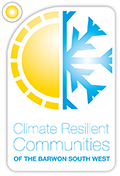Table 17 is an outline of the key indicators used to measure the sensitivity and adaptive capacity within the Barwon South West Region. These indicators have been ranked based on current sensitivity and adaptive capacity to provide an overview of what the regional trends are. The indicators have been selected so as to provide complete coverage of the Region; address key climate impacts identified and can be represented spatially. These indicators are based existing data sets that outline the current state, demographics or condition and do not include projected changes in these parameters. When combined with the climate exposure layers it provides an indication of overall vulnerability for the Region.
| Scope | Key climate impacts for Region |
Indicators |
|---|---|---|
| Economic | ||
|
Built environment Financial and physical capital |
Agriculture sector put under stress, in particular:
|
Areas of economic activity for agriculture land use (Source: Victorian State Government) Soil productivity and degradation (Source: Australian Government, Department of Agriculture) |
|
Water infrastructure put under stress Decrease in water yield Increase in water demand |
Water supply-demand balance (Source: Wannon Water and Barwon Water) | |
|
Power infrastructure put under stress Increase in electricity demand from winter heating to summer cooling |
Energy supply demand (Source: Powercor) | |
| Environment | ||
| Natural environment | Reduction in water quality and flows in rivers and wetlands |
Wetland extent and condition (Source: Victorian State Government) Groundwater salinity (Source: University of Ballarat) |
| Altered species distribution | Native vegetation extent and condition (Source: Victorian State Government) | |
| Greater bushfire activity | Bushfire prone areas (Source: Victorian State Government) | |
| Inundation from heavy rains and storm events | One in 100 year flood prone areas (Source: Victorian State Government) | |
| Social | ||
| Human capital | Increase in heat-related health problems, in particular:
|
Age (above 65 and living alone and full dependant – four years and under) Household ownership Median house income Non-English speaking backgrounds Population density (Source: Australian Bureau of Statistics) |
Table 17: Sensitivity and adaptive capacity indicators
The projections and mapping are to be interpreted with the following as a conceptual guide.
In summary the exposure maps for total precipitation and mean temperature indicate where it will get wetter (or drier) and hotter within the Region. The sea level rise maps outline the extent of coastal inundation.
- Average minimum 2030 and 2070 ( o C) – the average annual minimum temperature for the Region experienced in 2030 and 2070
- Average maximum 2030 and 2070 ( o C) – the average annual maximum temperature for the Region experienced in 2030 and 2070
- 2030 and 2070 extreme events – days experienced in the Region with any daily recorded maximum temperature over 35 o C or 40 o C (depending on the sensitivity of Region) for a single day and three consecutive days. Return period relates to the predicted frequency of a particular extreme event in years.
- Total minimum 2030 and 2070 (mm) – the average annual minimum precipitation for the Region experienced in 2030 and 2070
- Total maximum 2030 and 2070 (mm) – the average annual maximum precipitation for the Region experienced in 2030 and 2070
- 2030 and 2070 extreme events – days experienced in the Region with any daily-recorded precipitation over 50 mm for a single rainfall event. Return period relates to the predicted frequency of a particular extreme event in years.
- The sea level rise maps outline the extent of inundation from sea level rise with a one in 100 year storm tide scenario for 2100 (0.82m). Please note that a one in 100 year flood prone map replaces the sea level rise maps for municipalities without a coastline.
In summary the maps for social, economic and environment indicate where areas will have the highest sensitivity and least adaptive capacity to the projected changes in climate. These maps do not reflect actual data boundaries as these maps have all been consolidated into Census data boundaries. This has been done to provide consistency across the three maps, provide Regional trends and for ease of interpretation.
- The social map indicates human populations, which have high sensitivity and low adaptive capacity to projected changes in climate.
- The economic map indicates land use activities, which have high sensitivity and low adaptive capacity to projected changes in climate.
Climate exposure data
Appendix 3 - Climate risk and adaptation template








